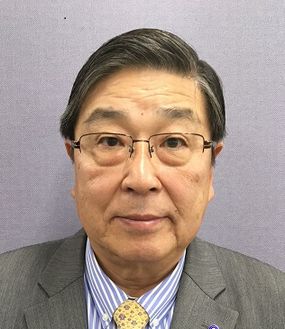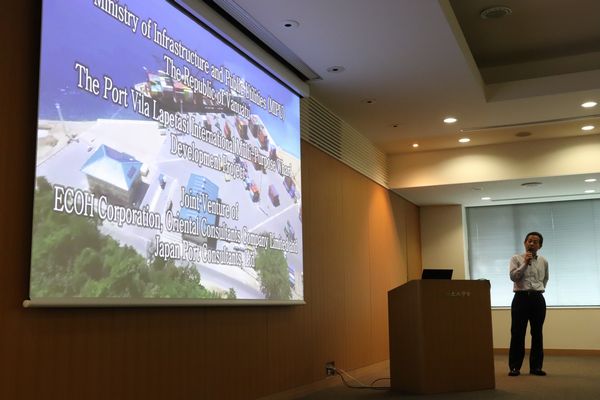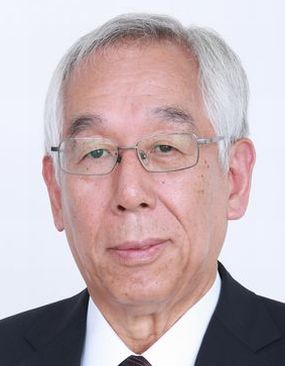IAC News
IAC News No.73, November 2018
Japan Society of Civil Engineers International Activities Center November 1, 2018 IAC News No.73
2018 JSCE Annual Meeting ReportⅠ
International Panel Discussion
“Comparison of infrastructure Maintenance and Resilience among Asian and Western Countries”
International Panel Discussion titled “Comparison of infrastructure Maintenance and Resilience among Asian and Western Countries” was held as one of the international events in JSCE Annual Meeting 2018 on August 29 at Hokkaido University, Sapporo. The International Panel Discussion was jointly organized by the international Activities Center and the JSCE-ASCE Special Committee on Infrastructure Resilience. Dr. Yoshikazu Takahashi, Professor of Kyoto University delivered a speech titled ‘infrastructure resilience strategy in structure/earthquake engineering’ as the first keynote speech. The second keynote speaker, Dr Craig Davis who serves for the City of Los Angeles Department of Water and Power as Waterworks Engineer and Water System Resilience Program Manager, delivered a speech on infrastructure resilience framework which contextualize the linkage between the engineering aspect and social or community aspect.
Followed by those keynote speeches, a panel discussion session was held inviting representatives of Agreement of Cooperation societies(AOC) , . Mr. Yan-Jang Su, a project manager at CECI Engineering Consulting Ltd., from CICHE (Taiwan), Dr. Kyungrock Paik, a Professor of Korea University from KSCE, Dr. Hideto Kon, Professor of Hokkaido University and Mr. Takehiko Bamba of Hokkaido Development Bureau, Ministry of Land, Infrastructure, Transport and Touriusm from JSCE introduced state-of-the-art practices for improving resilience and infrastructure maintenance policies.
Dr. Kiyoshi Kobayashi, the president of JSCE commented that the backgrounds of the necessity for resilience policies were increasing vulnerability due to the advancement of social systems, the advancement of social recognition of risks and the change of external force caused by the climate change. In addition, he insisted on the necessity of comprehension through knowledge management and international platforms for discussion as well as the importance of having continuous discussions in the international societies.
This discussion was held, supported by International Scientific Exchange Fund (ISEF). On behalf of the organizers, I 'd like to express my appreciation for the ISEF.

Dr.Kobayashi and International Guests

From right to left, Dr. Craig, Dr. Takahashi, Dr. Paik, Mr. Su, Mr. Bamba, and Dr. Kon
【Reported by Masamitsu Onishi, Associate Professor of Disaster Prevention Research Institute, Kyoto University】
2018 JSCE Annual Meeting Report II
International Workshop for Young Civil Engineers

Yoshihiro Okumura
(Kansai University)
International Student Network Group, IAC held the International Workshop for Young Civil Engineers, as part of the 20th International Summer Symposium, on August 29 at Sapporo Campus, Hokkaido University. The workshop targeted the international students who were studying in Japan and International young civil engineers, under the theme of “When a Mega Disaster Strikes… - How would you respond if you were a mayor? -”.
This workshop is very unique because the mayors in the Miyagi prefecture experienced the same workshop half a year before the 2011 Great East Japan Earthquake and Tsunami. Forty-one participants were divided into seven groups, and they played the mayor of a city damaged by a mega earthquake and tsunami disaster. Each group discussed Common Operational Picture (COP) and Incident Action Plan (IAP); in what situation the city should be in a week. Finally, they reported the objectives and post-disaster policies and practices like a real mayor in a pseudo-press conference.
Participants at the Workshop Closing
The participants's comments are as follows:
・This time the theme of the workshop was regarding preparedness and decision making, as being a Mayor of a town/city after a post-earthquake or post-tsunami event. International students were categorized into different groups of 6-7 members each where we discussed our ideas to support the cause. Every student was involved in teamwork working through different case studies, which I think was the most salient feature of this workshop.
・There were many things to learn regarding post-disaster aftermaths, and how to plan, decide and implement right actions. Also, the interaction with different nationalities at the workshop was an exciting experience. Knowing people and sharing each other’s innovative ideas broadened my thinking and understanding of different study fields as well. The theme of this workshop was really great for brainstorming, interactive learning, building relationships, and problem-solving. Overall, it was a friendly and enjoyable learning environment. Thanks to JSCE International Activities Center for organizing such fruitful event.

A Mayor Reports at a Press Conference

Participants as City Officers Discuss Post-Disaster Policies
The Workshop was based on ISO 22320, which is the international standard of emergency management. This experience would help them, regardless of the field, company and country they will work.
【Reported by Yoshihiro Okumura, Associate Professor of The Faculty of
Societal Safety Sciences, Kansai University】
【Alumni of DOBOKU Series】
Life in Japan; A Transition Experience From College to Career
KAWIN Saipraserkit,
Senior Professional Level Civil Engineer at
Department of Rural Roads, Ministry of Transport Thailand.

KAWIN Saipraserkit
Ministry of Transport, Thailand
Kawin was born in Bangkok, Thailand 1986. He received his B.E. degree in structural Engineering from Chulalongkorn University in 2007, and the M.E. and Ph.D. degrees in Fatigue of Steel Structures from the University of Tokyo Institute of Technology, Japan in 2010 and 2012. Shortly after his graduation, he continued his career as an assistant professor in Tokyo Tech., before moving back to Thailand in 2014 to serve his motherland country. Currently, he maintains his position as a senior professional level civil engineer at department of rural roads, ministry of transport Thailand.
Back in 2006, as a senior student in his fourth year in faculty of engineering, Chulalongkorn University, Kawin has a chance to be a part in research involving with the earthquake situation in ChiangRai, a province in northern part of Thailand. This project gave rise to his interest in the study of earthquake. His advisor at that time, Dr. Anat Ruangrassamee who is also an alumni of Tokyo Tech., gave him an advice to continue his study in Japan. As one of the country that the earthquake most likely to occur, Japan has abundant resources of knowledge, as well as the ability and technology to conduct research in related topic. Considering about these facts, Kawin decided to take MEXT scholarship and continue his grad school in Japan. He chose his field of study in steel and therefore he was assigned to the laboratory under supervision of professor Miki Chitoshi.
They say life is not a bed of roses, but first year as a Ryugakusei was struggle and full of thorns. Shortly after his arrival in Japan, Kawin found out that his advisor, professor Miki was going to reach his retirement in three years. By this means, Kawin had only three from five years to complete both master and PhD courses, including the minimum requirements of 3-months internship and 5-publications for peer-review journal papers (Requirement for the publication was raised from three to five, in accordance to the shorten of his course hours). Undoubtedly, his first and second year life in Tokyo Tech. was very stressful. After uncountable restless days and nights, tons of physical and mental suffering, Kawin had adapted to work hard like a Japanese. Afterward, however, he realized that in order to achieve quality work, getting plenty of rest is as much necessary. He learnt to maintain work-life balance and eventually had a healthier student life in his third year.

At the 64th International Institute of Welding Annual Assembly &
International Conference in Chennai, India in 2011
After all the hard work, along with guidance and support from his advisor Prof. Miki following with Prof. Sasaki Eiichi, Kawin was able to publish his fifth paper on his third year. One of his study was concentrated on the evaluation of the fatigue strength of beam-to-column connections under a number of material-mismatched conditions, combined with the numerous sizes of defects. In this study, Kawin proposed a master curve to evaluate the criticity of strength undermatching under high intensity cyclic loads (eg. earthquakes) as the result of his experimental and analytical work on several types of joints. The study was awarded Henry Granjon Prize for design and structural integrity in 2013.

With Dr. Miki at the 66th International Institute of Welding Annual Assembly &
International Conference in Essen, Germany in 2013
After His graduation, without reluctance, he applied for the assistant professor position in his laboratory. A major reason for apply this job was to extend his research field in steel. Nevertheless, experience as an assistant professor was totally different from what he had gained as a PhD student. Firstly, there was a big language barriers difficulty. Though he didn’t have to speak Japanese when he was a student, as a lecturer all teaching material and script had to be prepared in Japanese, which made it twice harder for him. Secondly, he used to work solitarily when he was a student, becoming an assistant professor meant he has to deal with many people from different role. It was not easy for him at first, however this taught him a lot about human relationship and communication skill at work. Kawin utilizes these experience practically until nowadays. The message he got was that there is no such thing as impossible, it’s just a matter of figuring out how and be well prepared.

Assistant Professor at Tokyo Institute of Technology
At present, Kawin is running a feasibility study of the Chao Phraya River Crossing Bridge in Phra Samut Chedi district, SamutPrakan province under the department of rural road, in cooperating with Japan International Cooperation Agency (JICA). If the project can be carried out, it will help supporting main transportation system in Bangkok eastern suburbs area, as well as improving provincial logistic and transportation between regions by connecting the southern, western and eastern part of Thailand. However, the design study of the bridge is under processing. If it is approved, this bridge will become a new longest span suspension bridge of Thailand.
Alumni of DOBOKU Series is in collaboration with Editorial Committee of JSCE Magazine.
|
《Column》 Chitoshi MIKI, President, Tokyo City University
It is my pleasure to introduce Dr. Kawin, one of my first-class supervisees. Despite my unavoidable request for him to complete his MS and PhD study in a very short term, due to my retirement, he successfully accomplished this difficult requirement. From reading his article published here, it is very clear that he had gone through many challenges. As I believe his excellent potential, I pretended not to be aware of his hardship at that time. He had been continuously presented his studies at IIW commission XIII, the world leading society of the fatigue study, and he was once awarded IIW Henry Granjon prize. He is so competitive that I was asked from one leading University in Europe to recommend him for applying to the tenure-track position. If possible, I am confident to say that I really wish if he continues research with me. |
Japanese Civil Engineers The Global Leaders Symposium Series No.12
“Construction project of port and harbor infrastructure in the world
~The Port Vila Lapetasi International Multi-Purpose Wharf Development Project~”,
July 19, 2018

Takao Kakei
(JSCE Fellow, Director of International Activities Center, JSCE)
The Global Leaders Symposium Series No. 12 “Construction Project of Port and Harbor Infrastructure in the World” focused on Japan’s overseas port investment works, for the second time in the series, covering topics on the national government policy accelerating Japanese participation in overseas infrastructural investment in the port sector, including an example of efforts in transferring technology on Japan’s port- related design codes and construction standards to Vietnam.
It was emphasized that current port investment practices require participating engineers more integrated, especially with experts at operating the infrastructure in question, not only at contractual phase but also for its successful implementation. Another emphasis was placed on mutual understandings and reliance of Japanese and the client engineers which is essential for the successful participation to and implementation of the project, and that, for that purpose, establishing a common technical background among engineers on both sides is very important. The introduced technical cooperation is considered as one example of pioneering and good practices.
In the second part of the symposium, a project report on the new multi-purpose wharf at Port of Port Villa, Vanuatu, a JICA loan financed project, was presented. The project was implemented for relocating container- and cargo-handling capacities of the port to a new site at the Lapetasi district to ease traffic congestions caused by cruise and cargo vessels in the existing main terminal. The new wharf was officially inaugurated on February 24, 2018, that was almost 2 years since the construction started.
The project included the construction of a new 200m long steel pile wharf with concrete coping, relating dredging and land reclamation works with some technical challenges and environmental issues to be overcome on a rather tight schedule; on-time mobilization of all imported steel pipes and hat-type sheet piles and their precision setting , hard schedule coordination with neighboring construction works and site users, and the relocation of coral community found at the construction site. Speakers from TOA CORPORATION, the main contractor of the project gave presentations on project engineering, contractual, constructing and environmental aspects. Interesting facts and experiences in everyday life on/off the construction works in Vanuatu were also introduced from individual perspectives in the session as has ever been done in the symposium series.

TOA CORPORATION Delivered a Presentation about the Port Vila Lapetasi Project
【Reported by Takao Kakei, JSCE Fellow, Director of International Activity Center, JSCE】
Updates
◆Seminar on the Dissemination of Japanese Technical Standards Overseas、The 9th JOPCA Seminar (November 7, 2018)
http://committees.jsce.or.jp/kokusai/node/131/
◆2018 Joint Company Information Session (November 17, 2018)
http://www.jsce-int.org/node/574
◆The 1st Joint Symposium on Structural and Geotechnical Earthquake Engineering ISO-23469 (November 27, 2018)
http://committees.jsce.or.jp/eec2/node/139
◆Japanese Civil Engineers the Global Leaders Symposium Series No.13 (December 18, 2018)
http://committees.jsce.or.jp/kokusai/
◆CECAR8 Online Registration (Early Bird: June 1, 2018 – Jan 31, 2019)
http://www.cecar8.jp/
◆The International Infrastructure Archives– A Compilation of Japan’s Greatest Projects in Transfer of Civil Engineering Technology in Service –
http://www.jsce.or.jp/e/archive/
◆Asian Civil Engineering Coordinating Council (ACECC) International Newsletter
http://www.acecc-world.org/newsletter.html
◆IAC “News Pick Up!!” on the JSCE Japanese website
http://committees.jsce.or.jp/kokusai/node/118
◆Summary of featured articles in JSCE Magazine Vol. 103, No. 11, November 2018 on the JSCE website
http://www.jsce-int.org/pub/magazine
◆Journal of JSCE
https://www.jstage.jst.go.jp/browse/journalofjsce
◆IAC Students and Alumni Network
http://www.jsce-int.org/IAC_network
IAC News Subscription
The IAC News is one of the communication tools to share information and ideas with the members. We would like to invite you, your friends and colleagues to join the communication and to subscribe the IAC News. Please register online: (http://www.jsce-int.org/node/150). We look forward to meeting you.

